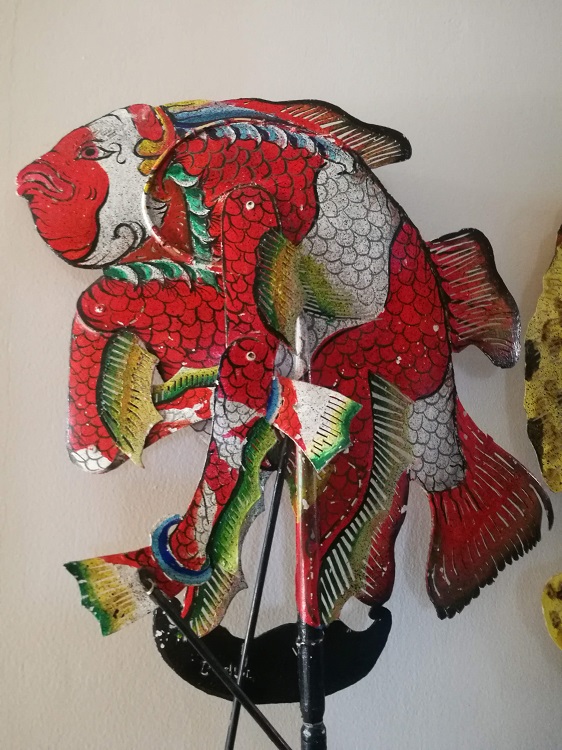Shadow puppetry is helping to protect Indonesia’s coral reefs and inspire a new generation of environmental activists
Laura Noszlopy
For centuries, traditional shadow puppetry (wayang kulit) has been used to animate rituals in Java and Bali. Old techniques can be redeployed to address contemporary problems and the environmental threats from climate change are among Indonesia’s most pressing. A new performance project aims to support the health and recovery of the coral reefs in the islands around south east Bali through art and community education.
As an island nation, Indonesia faces an imminent threat from climate change and extreme weather events. Whether deforestation, air pollution, biodiversity loss, rising sea levels, extreme weather events, inadequate waste disposal, water shortage, or any combination of these, man-made problems threaten the lives and livelihoods of the archipelago’s people and, of course, its non-human inhabitants. The situation in Bali has been exacerbated by the profound social and ecological consequences of uncontrolled tourism development. Infrastructure is sorely lacking while at the same time new hotels, villas and tourist developments take a dramatic toll on the delicate ecosystem. The water tables have almost run dry – 60 per cent of the island’s water supply is directly consumed by the tourism industry. The roads are notoriously jammed with traffic and the air polluted with emissions; there is no public transportation system. Despite being blessed with regular sunshine and surrounded by ocean, the island is powered by huge coal-fired power plants rather than solar or wave energy.
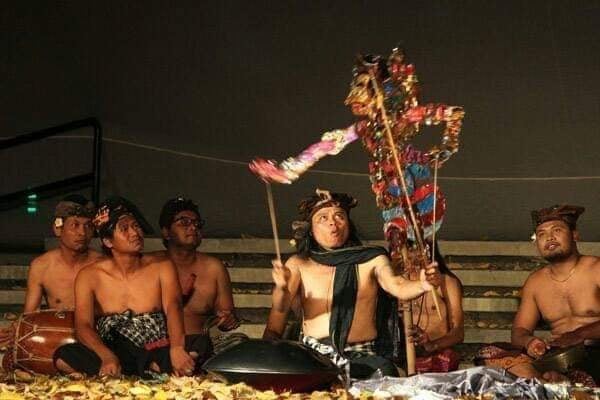
Despite this, Indonesia has the world’s highest number of climate change deniers, people who do not believe or understand the science, or who think that climate change is a ‘hoax’. A recent Cambridge University survey revealed this alarming trend, despite the fact that Jakarta is sinking, rising sea levels threaten coastal communities, extreme weather disrupts agriculture, and rising temperatures are doing lasting damage to marine life and coral reefs in particular. Of the 23 countries surveyed, Indonesia had the biggest percentage of climate deniers (18 per cent), followed by Saudi Arabia (16 per cent) and the USA (13 per cent). The researchers found that religion played a role in these beliefs, as with Saudi Arabia and the USA, but that the absence of environmental education and climate science in the school system and the consequent lack of coverage in the media was especially problematic in Indonesia.
So, what can be done to raise awareness of climate change in Indonesian communities? One novel approach is the adaptation of popular and familiar performing arts.
Raising awareness
The traditional performing arts, and wayang kulit in particular, have always been a means to address cosmological and immediate societal concerns through the use of adaptive lakon (narratives and plot devices) and creative imagery. Typically, performances have simultaneous ritual, pedagogic and entertainment functions. Since the late 20th century, Balinese dalang (shadow puppeteers), sometimes in collaboration with artists from other parts of the world, have integrated innovative storylines, musical scores and designs into the classic wayang kulit format to address contemporary issues.
Most Balinese wayang kulit narratives in some way deal with a) the maintenance of balance in the human-natural-cosmological ecology, b) thinly veiled sociocultural and political commentary and critique, and c) a didactic element, whereby important messages are conveyed to communities through the medium of entertainment and a well-known classical tale.
In Bali, several dalang have created performances that address, in part or in full, environmental issues. Usually these relate to flora and fauna (biodiversity), the impacts of globalisation and tourism or, more recently, plastic pollution. For example, I Wayan Wija’s Wayang Tantri alludes to the interconnectedness of the natural world, animal, human and spiritual; it also gives a direct voice to the animal characters.
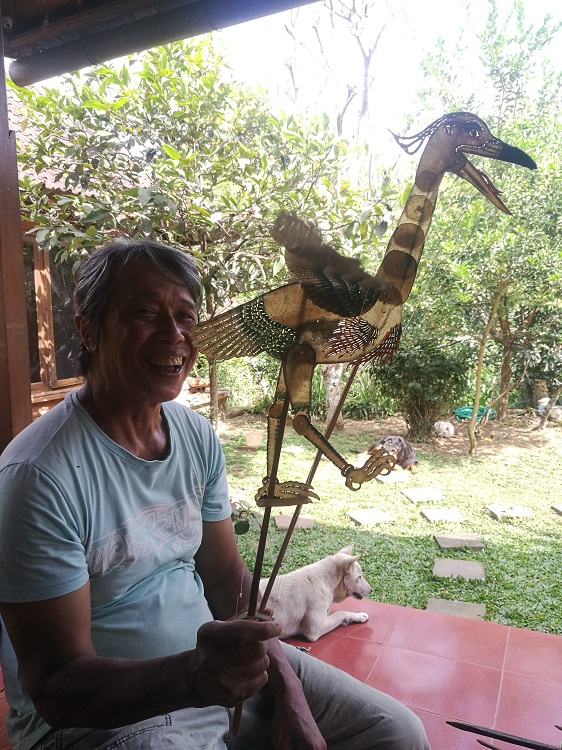
Wayang kulit has a de facto relation to environmental concerns: the kayon represents the tree of life, which demonstrates the inherent sense of ecological balance. Even with Wija’s Tantri puppets, created in the 1980s, the characters act within the established story and contemporary commentary is slipped in conversationally. He gives the example of the frog puppets. They don’t give a lecture on water security and sustainability; but they happen to meet by the stream; they happen to discuss how sweet the water tastes; they happen to mention how they can’t drink like this in the city, because the water is contaminated; and so on, before moving on with the main storyline.
This is typical of how social commentary and critique is subtly integrated into Balinese performing and narrative arts – with a light and humorous touch in a familiar storyline. Other well-known dalang, like I Made Sidia and I Gusti Putu Sudarta, for example, have also created performances that integrate these themes and environmental messages, both indirectly through narrative turns and sometimes, more directly. In Sudarta’s multimedia Wayang Plastik of 2019 (with choreographer Kadek Desi Aryani Arsa Wijaya and a large troupe of dancers), the message was explicit and the puppets and dancer’s costumes were made from recycled plastic trash. Sudarta created this performance to voice his longstanding protest against the endemic plastic pollution which he views as ‘an assault on Mother Earth by human beings’ that at the same time has ‘become a pandemic that threatens humanity’.
Educating for change
But I want to focus on one particular contemporary wayang that takes a more direct approach to performance as community education – the Coral Triangle Center’s Wayang Samudra. The story in some ways starts with Gregory Churchill, an American lawyer and member of the board of the Coral Triangle Center (CTC), based in Sanur, in the south of Bali. Gregory is also a wayang enthusiast who has lived in Indonesia for over 30 years. In 2016, he asked Sujono Keron, a multi-talented artist, dalang, carver and choreographer from Magelang in Central Java, to make a new wayang about life on coral reefs and the many threats to the sustainability of their marine life.
Sujono Keron was very keen to do this, so Gregory arranged for him and Sih Agung Prasetya, a fellow dalang from Magelang, to travel to Bali for a very short course at the Coral Triangle Center (CTC). They learnt about the types of marine animals that live on or from the reefs and the challenges they are facing from over-fishing, bombing, divers and tourism, plastic waste, and the dramatic impacts of climate change on the life of the reef. It was agreed that CTC would commission a set of the new puppets to be used for training and public awareness activities at its new, very impressive marine conservation hub in Sanur.
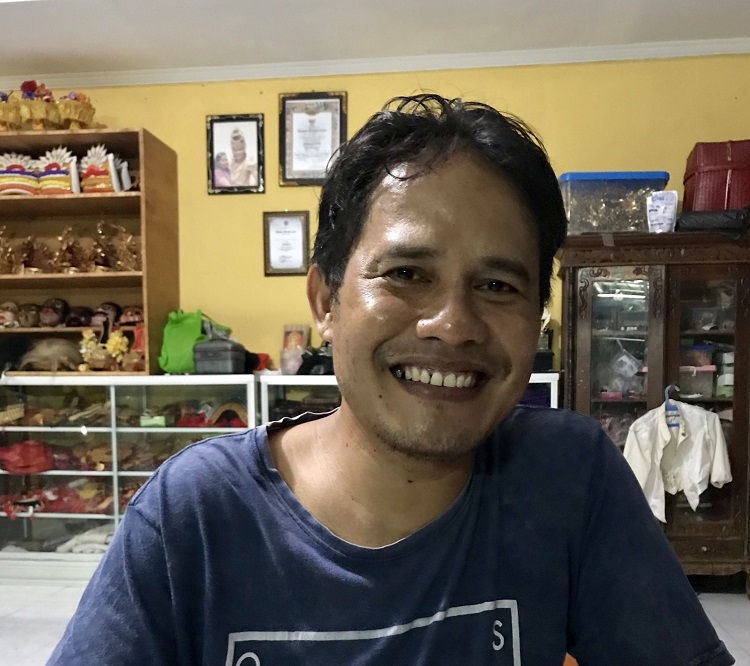
Sujono and Sih went back to Magelang to design the puppets and develop stories for performances. In the inaugural performance in Bali, Sih was the main dalang and was dressed as a traditional fisherman. While fishing, he caught something big and proceeded to haul in the other dalang, Sujono, from beneath the shadow screen. Sujono was dressed head to toe as a fish, but was completely tangled up in plastic bags and plastic six-pack holders. The audience was invited to come up to the stage to help free the fish from the plastic.
As time passed, CTC recognised that the Wayang Samudra performances were very effective in capturing the attention of people in the coastal communities of Nusa Penida and Lembongan (small islands with wonderful coral reefs, off the south east coast of Bali), particularly the fishermen’s collectives and the local school children. CTC needed to recruit a local dalang from Denpasar to maintain and expand the performance programme. JM Taksu (aka I Komang Wardana) - who is better known as an MC for youth kecak performances - was approached by CTC about 4 years ago. He was asked to develop a simplified story for the wayang performance, and it engaged the audiences so effectively that he was hired for the role.
The narrative is changed according to whatever educational theme the CTC team is working towards at any given time. It’s always used to raise awareness of specific environmental and marine concerns – about the climate crisis, rising sea temperatures and coral bleaching; about plastic pollution; about throwing rubbish in rivers; about bomb fishing. Disney’s ‘Nemo’ often makes an appearance when the audience is made up of elementary school children; this is a popular attention-grabbing devise to hold the children’s attention. The Wayang Samudra ‘gives a voice to the fish’ and the whole purpose is to convey a clear, memorable message about protecting ocean life. It is also more overtly didactic than the majority of wayang performances and, when performed in an educational workshop context, often with other activities and Q&A, it seems to be very effective. There has been significant behaviour change to support conservation and sustainability among those whose livelihoods depend on these waters.
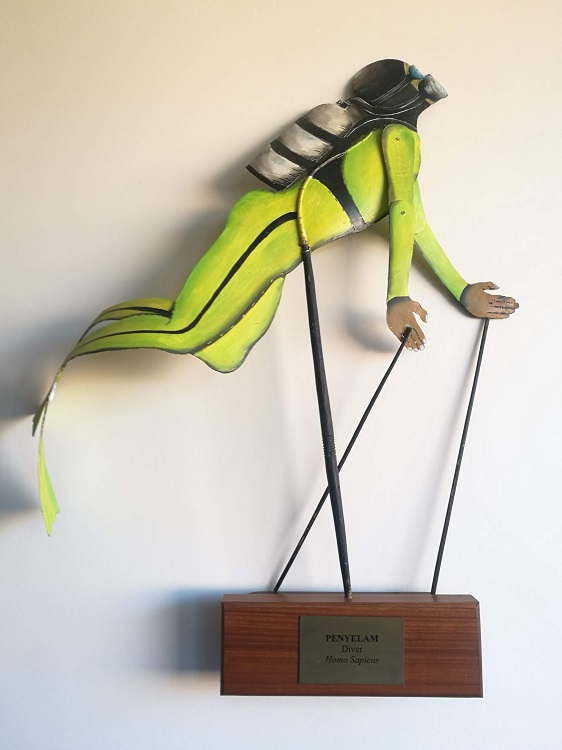
As of 2019, before the COVID-19 pandemic, the plastic plague had captured the public imagination in Bali and environmental activism and behaviour change was on the rise. Climate denial, or lack of awareness, remained widespread despite the critical threat. Plastic pollution is more immediately obvious and tangible than more complex environmental threats – like climate change – even though the latter poses a far greater and more imminent existential risk to Indonesian populations, particularly but not exclusively its coastal communities.
There is a huge opportunity for Balinese artists to use and adapt traditional forms to raise awareness of environmental problems and possible solutions and ways to mitigate the worst effects – there is international grant funding earmarked for environmental education projects. Balinese wayang kulit is facing a lull in popularity, as well as COVID-19 related restrictions on social gatherings. In safely modified form, so this type of performance as community education could be one way to reinvigorate and protect traditional arts, while at the same time reinvigorating and protecting the natural world. But time is running out.
Laura Noszlopy is a researcher and project manager for Enabling Wayang to Contribute to Environmental Discourse: Community, Puppet Theatre and Climate Change in Traditional and Post-Traditional Indonesia at Royal Holloway, University of London and Institut Seni Indonesia, Yogyakarta. The project is supported by a Newton Fund Institutional Links grant from the British Council.
